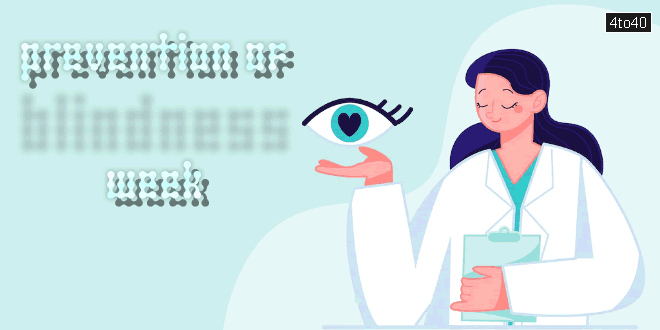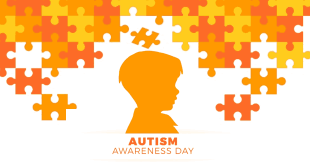Prevention of Blindness Week will be observed from 1st of April to 7th of April .
The day will be observed by spreading awareness on the precautions which needs to be taken to prevent blindness. It will also focus on detection, cure and treatment of eye diseases. In schools and villages, people and children will be educated about the importance of eye hygiene.
Various eye checkup camps will also be organised in cities and villages across the nation. People will be checked for their eyesight, diagnosed and proper treatment and medication will be provided in the camps.
About Prevention of Blindness Week
The Prevention of Blindness Week campaign is planned by the Government of India which is held from 1st to 7th April for increasing the awareness towards the blind people. Blindness is a big issue and painful condition for the people who are suffering from it which cannot be felt by those who have eyes. Though the campaign has been organized to aware almost all citizens all across the country in order to understand the value of eyes for the blind people. India has a lot of people who are blind by birth or because of the accident.
There are 10 million people who are suffering from the blindness in our country. The worldwide number of the blind people is approximately 37 million. The government of India has organized a campaign to aware the people as well as offer better opportunities to the blind people by establishing the variety of institutes, agencies, hospitals etc. Through the week people get education related to healthcare and eye care. At some places in India the affected people do protest for their right which must be available to them.
Some of the educational institutional are dedicated to offer the education to the blind students but still they need more attention. In order make the campaign successful, the various departments, publication houses, NGOs should have to work together. Eye donation is the most effective way to provide real support to the blind people as well as bring a permanent light in their dark life.
The aim of the campaign is to pay attention over various risk factors that lead to the eye injuries which can cause visual impairment. People need education of all possible eye problems, complications including the periodic eye checkup from an ophthalmologist, nearest eye clinics, which facilitates checkup facility.
The campaign involves well educated health personnel from the government departments, voluntary agencies and state health education bureau which are working to increase the awareness towards program. It is very necessary to alert and awaken the people about all the factors causing blindness.
According to the statistics it has been noted that India has the largest number of blind people. And almost one among the three is blind. The major causes of the blindness are trachoma, cataract, vitamin A deficiency, malnutrition including the shortage of optometrists and donated eye. Madhya Pradesh and Rajasthan are most affected states with blindness.
When it was started:
Prevention of Blindness Week was first started by the Jawaharlal Nehru and Raj Kumari Amrit Kaur in the year 1960 under the Societies Registration Act of 1860. Another campaign “The Right to Sight” was launched by the WHO for the prevention of the blindness.
Varieties of events and activities are organized by the Government and non Government institutions and organizations on the day:
- Community health centers are organized in order to offer the free educational material, knowledge of eye care, eye ailments, free eye check up of the refractive errors, cataract detection as well as offering free eye spectacles to the affected person.
- Free eye camps are held to provide eye health education, preventing measures of the congenital eye diseases through the rubella and measles vaccination.
- Varieties of posters, leaflets are displayed at the schools for better awareness.
- Various eye camps are organized for the better awareness among people for the eye and cornea donation for being transplanted to the needed one.
Can Glaucoma Make You Blind?
From the time you wake up in the morning till you sleep at night, your eyes are always at work. The eyes receive information, such as shapes, colours, or movements, from the surroundings and send it to the brain to process an image. However, serious eye conditions like glaucoma interrupt this transmission of information by damaging the optic nerve, resulting in vision loss. Data released by the World Health Organisation shows that nearly 45 lakh people all over the world are blind because of glaucoma. Out of which, India accounts for more than 12 lakh cases of blindness due to glaucoma.
Every year the Government of India observes “Prevention of Blindness Week” from the 1st to the 7th of April to raise awareness against the causes of blindness and the ways to prevent them. This article helps raise awareness about glaucoma to prevent total loss of vision.
What Is Glaucoma?
Glaucoma refers to a group of eye disorders that are associated with damage to the optic nerve, which is responsible for transmitting visual information from the eyes to the brain. The condition is mostly the result of abnormally high pressure inside the eyes. Over time, the increased eye pressure can damage the optic nerve resulting in gradual loss of vision. If left untreated, the condition can cause blindness.
Causes of Glaucoma
Scientists are still trying to determine the exact cause of glaucoma. However, increased intraocular pressure (pressure inside the eye) is believed to be the reason for the optic nerve damage.
The human eye contains the ciliary body, which supports the lens and releases a clear fluid called aqueous humor to keep the eyes inflated. Aqueous humor fills the front part of the eyes and drains out through a mesh-like tissue located between the iris (coloured part in the centre of the eye) and cornea (outermost layer of the eye). However, when the tissue fails to function properly, the fluid starts building up inside the eye, resulting in increased intraocular eye pressure. A prolonged increase in intraocular eye pressure can damage the optic nerve, ultimately leading to vision loss.
Glaucoma Symptoms
Depending on the type of glaucoma, a person may experience the following symptoms:
1. Open-angle Glaucoma
Most people with open-angle glaucoma do not experience any noticeable symptoms during the initial stages. The condition doesn’t become evident until the damage is quite severe. However, as the disease progresses, the person may experience:
- Blind spots in peripheral (side) vision
- Tunnel vision
2. Acute angle-closure glaucoma
Acute angle glaucoma is considered a medical emergency as it doesn’t exhibit any symptoms before the attack. The symptoms may include:
- Intense pain in the eyes
- Eye redness
- Dilated pupils
- Severe headache
- Nausea
- Vomiting
- Halos or colored rings around lights
Who Is at Risk of Glaucoma?
Some of the major risk factors for glaucoma are:
- Being over 60 years of age
- Diabetes
- Heart disease
- Sickle cell anaemia
- High blood pressure
- Family history of glaucoma
- Chronic eye inflammation
- Thin cornea
- Injury to the eyes
- Prolonged use of steroids
How Is Glaucoma Detected?
Glaucoma can only be detected by an ophthalmologist through a detailed eye examination. Tests that may help determine the condition include:
- Tonometry – to measure eye pressure
- Pachymetry – to measure the thickness of the cornea
- Visual field test – to look for side vision loss
- Gonioscopy – to inspect the drainage
- Dilated eye exam and optical coherence tomography (OCT) – to check if the optic nerve is damaged or not
Can Glaucoma Be Cured?
Currently, there is no full cure for glaucoma. The damage caused by the condition cannot be reversed. However, prompt treatment can help delay or prevent further loss of vision. The treatment of glaucoma focuses on lowering the intraocular pressure (pressure inside the eyes). Depending on the underlying factors, the treatment options may include:
- Eye drops: These topical medications lower eye pressure by improving the drainage of aqueous humor from the eyes or by decreasing its production.
- Oral medication: Oral medications such as beta-blocker or a carbonic anhydrase inhibitor may be prescribed. These medications improve the drainage of aqueous humor and inhibit its production.
- Laser treatment: In this procedure, the doctor uses a small laser beam to open clogged channels in the trabecular meshwork. This helps improve fluid drainage and lower eye pressure.
- Surgery This is an invasive procedure in which a surgeon creates a new channel to drain out the aqueous humor and lower the eye pressure. It might involve implanting a tube to help drain out the fluid.
How to Prevent Glaucoma?
Glaucoma cannot be prevented completely. However, self-care measures that can help slow down the progression of the condition and prevent total loss of vision include:
- Frequent eye care exams: Regular preventative eye care exams can help with the timely detection of glaucoma, thereby preventing further loss of vision.
- Exercise: Regular and moderate exercise can help reduce the risk of glaucoma by lowering eye pressure.
- Protect your eyes: Severe eye injury can increase the risk of glaucoma. Use protective eyewear when playing sports or working on projects that may affect your eyes.
- Eat a balanced diet: A diet rich in vitamin A and omega-3 fats can help in improving eye health.
Takeaway
Vision loss can be devastating. By creating awareness against diseases like Glaucoma, we can help reduce the cases of blindness and ensure healthy vision in people. The “Prevention of blindness week” campaign also aims at educating people about eye donation to help bring light to the lives of blind people.
 Kids Portal For Parents India Kids Network
Kids Portal For Parents India Kids Network







